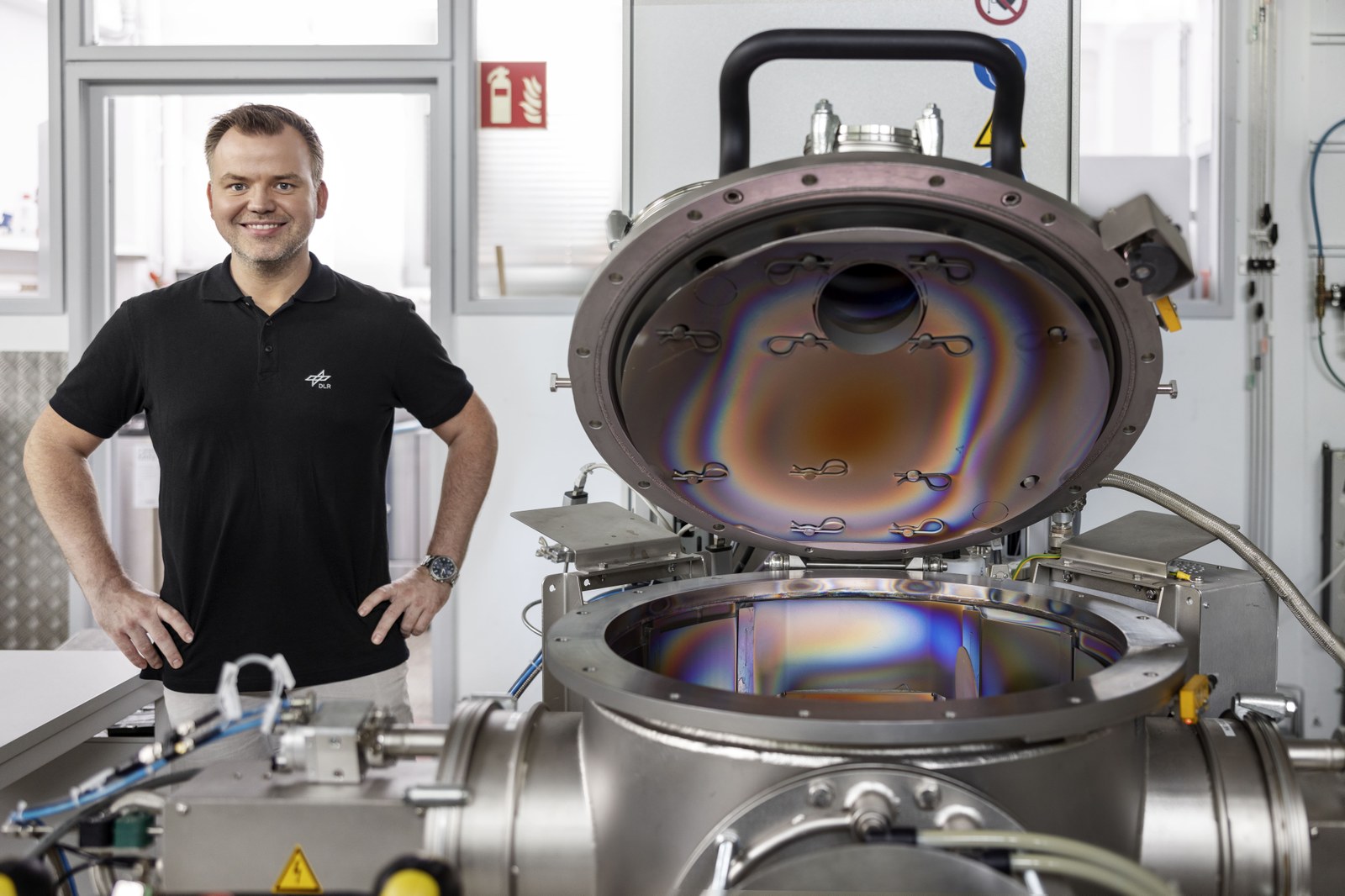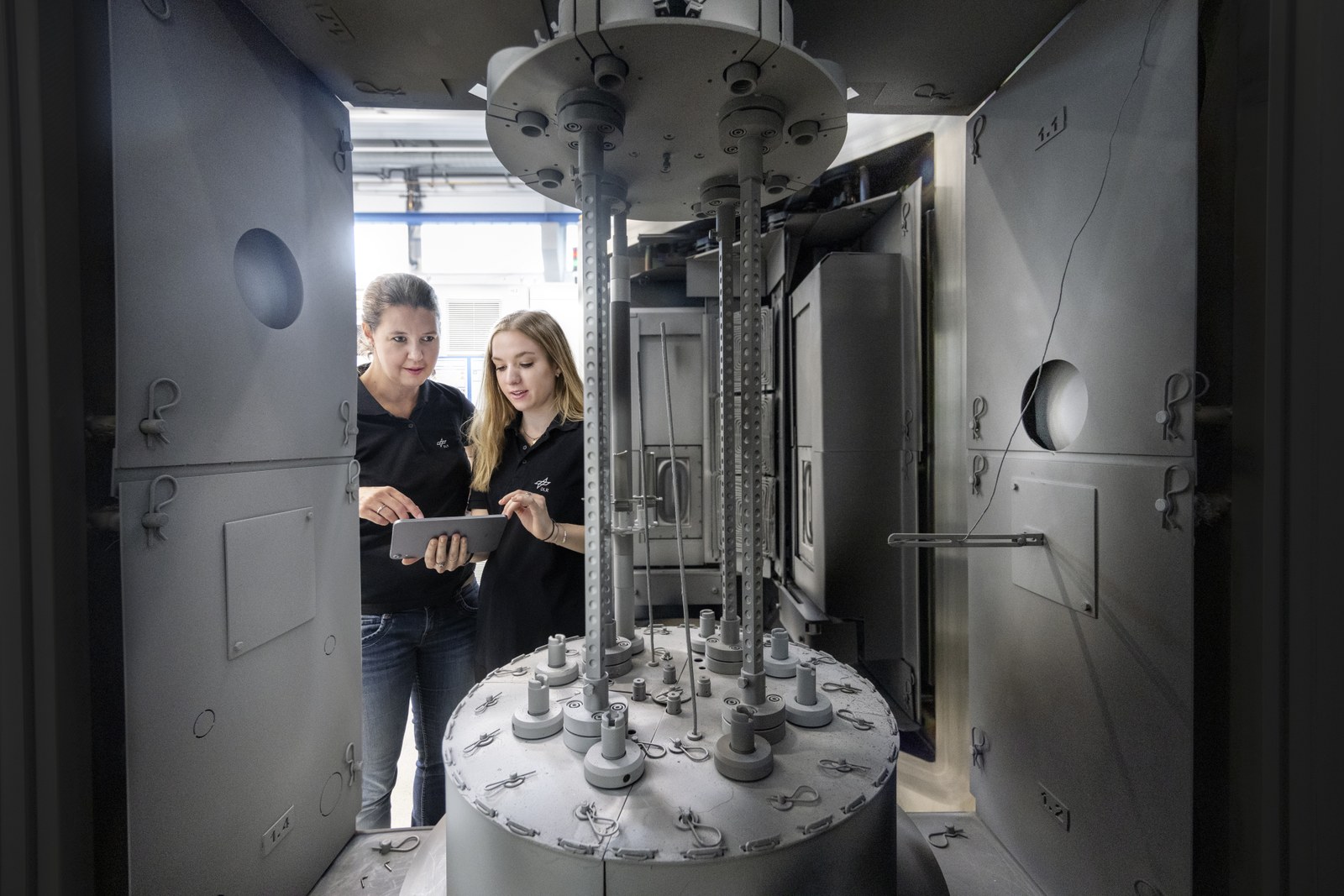Department High Temperature and Functional Coatings
Our institute develops both metallic and ceramic protective layers for metallic, ceramic and composite materials. The development of functional layers extends to a wide variety of application areas. These include, for example, sensors for determining pollutants and gases in combustion environments and industrial atmospheres, electrodes for use in multi-layer flat energy storage systems such as batteries and supercapacitors, as well as layers with antimicrobial properties and special layers for space applications and quantum computers.
Protective coatings: application examples
In research and industry, a variety of protective coatings are necessary in the areas of aviation, space travel, transportation but also energy and security. Both metallic and ceramic protective coatings are being developed to prevent the effects of damaging environmental media on materials, components and structures.
The research and development work focuses on PVD-based protective coatings for important engine components especially in future turbines such as compressor and turbine blades as well as combustion chamber parts, which are made of metallic and fiber-reinforced ceramic materials. The protection of components under elevated water vapor levels, in challenging environments with lots of aerosols and dust (CMAS), during hydrogen combustion and using climate-neutral fuels such as SAF is increasingly playing a role.
For the highest application temperatures, Ultra High Temperature Ceramics (UHTCs) must be protected against oxidation and aggressive operating atmospheres. Adapted new protective coatings are being developed for these challenging new applications.
Possible areas of application and research topics for protective coatings are:
- Thermal protection systems for engine components (EB-PVD thermal barrier coatings)
- Protection of titanium, TiAl, nickel and novel silicide-based alloys
- Protection of oxide and SiC-based fiber composite materials through environmental barrier coatings
- Protection of combustion chamber components for gas turbines and engines
- Damage mechanisms and assessment of the service life of coatings in complex test environments with temperature gradients, thermocycling, with high water vapor contents or under direct combustion atmospheres (hydrogen and methane combustion)
- Erosion protection coatings
Functional coatings: application examples
Functional coatings for gas sensors are used to monitor combustion processes and to detect leaks for the safety of hydrogen tanks in aviation. For this purpose, research is not only carried out on individual components, but through the integrated and intelligent structure of thin films. Multifunctional sensor systems are being developed that work particularly efficiently and at high temperatures.
Functional coatings continue to be developed for efficient energy storage, especially in small, self-sufficient systems that can be integrated into many components. Other topics include special coatings for space vehicles such as “demisable satellites” or anti-microbial coatings.
Possible areas of application and research topics for functional coatings are:
- Semiconducting and nanostructured coatings for the use of various sensors
- Nanostructured and metal oxide based (e.g. Ni-containing NMC cathode materials) electrodes for batteries and supercapacitors
- Laser-induced and CVD-coated graphene electrodes for the production of micro-supercapacitors
- Electrolyte coating of fibers and electrodes for integration into flexible energy storage modules
- Special coatings for space applications
If you would like to find out more about protective and functional coatings, their areas of application or our projects or are interested in working together, please contact us!




